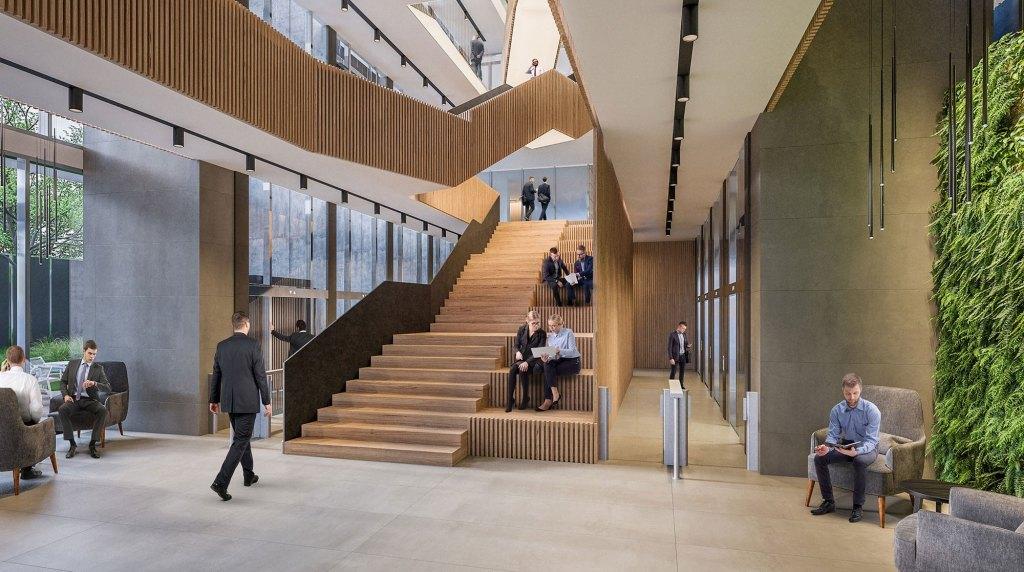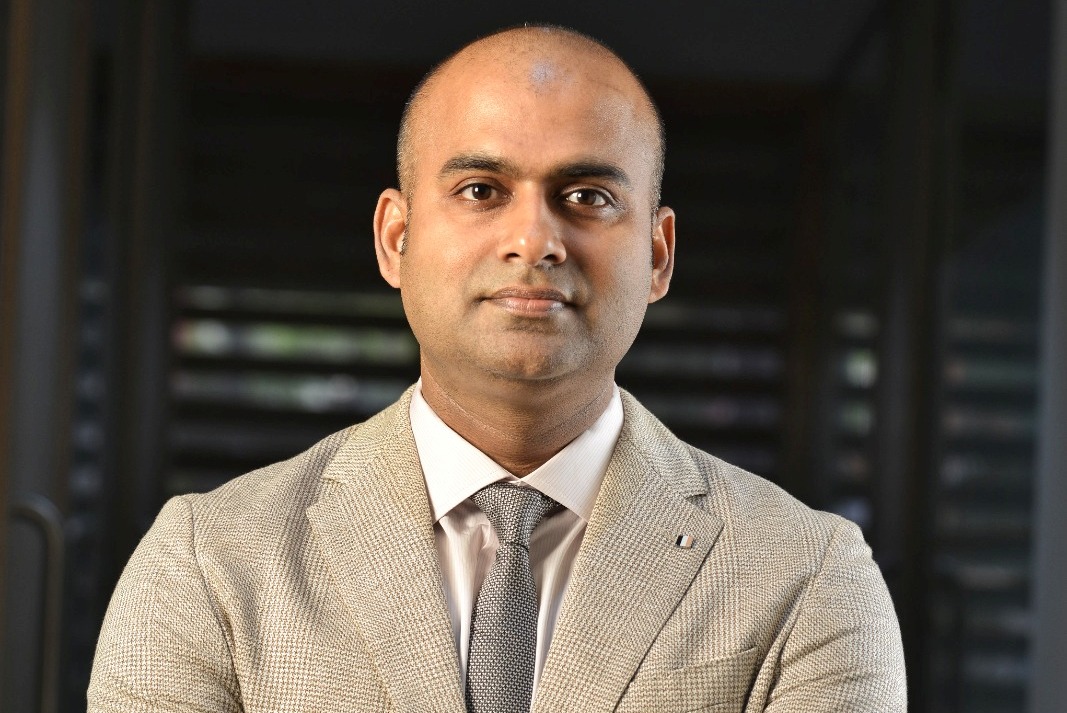 The architectural and design industry is undergoing a significant transformation. It's driven by the idea of celebrating diversity and being inclusive. This shift is more than just adapting; it's a profound change to meet the evolving needs of society.
The architectural and design industry is undergoing a significant transformation. It's driven by the idea of celebrating diversity and being inclusive. This shift is more than just adapting; it's a profound change to meet the evolving needs of society.
In this context, the concept of inclusive design within sustainable commercial interiors is taking centre stage. It's not just about creating spaces; it's about crafting environments that work well for everyone, regardless of their background or abilities. Architects are the leaders of this transformation. They're not just designing spaces; they're redefining how we experience the world around us!
In the following article, Erna David, Head of Project Interiors, APICES Studio Pvt Ltd, explores these concepts. She delves into the core principles of inclusive design and how they're making sustainable commercial spaces better for everyone.
Let's dive deeper into these principles through Erna's perspective.
In today's world, where diversity is celebrated and inclusivity is a fundamental value, the architectural and design industry is adapting to meet the needs of an ever-evolving society. In this pursuit, the concept of inclusive design in sustainable commercial interiors has emerged as a robust framework to create spaces that cater to the abilities and backgrounds of everyone. Architects are redefining how we experience the built environment by integrating many elements. These include accessibility, universal design principles, cultural sensitivity, mobility and navigation solutions, and a user-centric approach. They also incorporate flexible layouts, multi-sensory design, technology integration, thoughtful material selection, collaborative spaces, and natural lighting. Additionally, architects consider acoustic considerations, assistive devices, and sustainability in their designs.
Integrating accessibility
The integration of accessibility features is at the core of inclusive design. Ensuring that spaces are accessible to individuals with disabilities is a legal and moral design obligation. It mandates incorporating ramps, wide doorways, accessible restrooms, and Braille signage. But it goes beyond that; it's about creating an environment where everyone can participate fully. This may include height-adjustable workstations, sensory navigation aids, and tactile cues using universal design principles. The architectural focus is on creating environments usable by a diverse range of individuals, regardless of their age, abilities, or backgrounds. A universally designed workspace, for instance, will have adjustable desks that accommodate both sitting and standing positions, ensuring comfort for everyone. This approach ensures that the space remains functional and relevant as users' need change over time. Visionaries like Infosys, across its campuses in Bangalore, Mysore, Pune, etc., have managed to provide integrated accessibility throughout campuses, promoting a sense of belonging and respect by pioneering inclusivity and human centric approach in design while attaining environmental responsibility.
Cultural sensitivity
Cultural sensitivity is vital when designing spaces for a diverse population in every aspect. Spaces should respect various cultural needs and preferences, providing areas for prayer or meditation, accommodating dietary restrictions, and celebrating cultural heritage through art and decor. The goal is to create an environment where everyone feels respected and valued, as it prioritises ease and pride in belonging for all, including those with disabilities, through a principle of inclusive design. Neurodiversity, Mobility and navigation are critical aspects of inclusive design. The designed spaces should facilitate ease of movement for all, including those with disabilities. This includes providing clear pathways, minimising obstacles, and ensuring that elevators, escalators, and ramps are accessible and well-maintained with respect to all physical conditions. Moreover, integrating innovative wayfinding technology can assist individuals in navigating complex commercial spaces effortlessly.
User-centric approach
A user-centric approach involves engaging with the end-users to understand their unique needs and preferences. Architects and designers can gather valuable insights that help create spaces that enhance the overall experience. Such an approach can be seen at the ITC Green Centre, Gurgaon, where it has been used to develop adaptable layouts and ergonomic furniture, ensuring employee well-being and engagement. User-centric design makes the workspaces responsibly functional and emotionally satisfying, fostering a sense of belonging and well-being. To create such designs, architects prefer flexible layouts that help them create adaptable workspaces that seamlessly accommodate different activities and user requirements. Inclusive design embraces flexibility in usage of modular furniture, movable partitions, and spaces that can be easily reconfigured to suit varying functional needs. Flexibility in design empowers users to shape their environment to serve their purpose at best while nurturing productivity of business’.
Engaging sensory perceptions
A multi-sensory approach to design engages diverse sensory perceptions. It goes beyond the visual and includes tactile, auditory, olfactory, and gustatory experiences. For example, a commercial interior might incorporate textured walls, soothing ambient music, pleasant scents, and accessible dining options. Engaging in multiple senses creates a holistic immersive environment for all. Employing tech integrated solutions unlatch various possibilities in sensor based experiences.
Material Selection: Careful consideration of finishes ensures a comfortable environment for all the users. Selection of right materials is critical part in sustainable and inclusive space design approach both for architecture and interior design. Suitable flooring patterns and wall textures help fighting visual challenges and provide low-glare surfaces for individuals with sensory sensitivities. Beyond aesthetics, these choices significantly impact the overall comfort and accessibility of a space keeping in mind the user diversity, as exemplified by the iconic New York Times building in New York by adhering to the A.D.A Standards. Thoughtful material choices play a profound role in enhancing experience, convenience and accessibility in workspaces. The strategic use of sound-absorbing materials fosters a harmonious auditory environment that supports inclusivity. At the same time, innovative wayfinding systems aid individuals to navigate expansive spaces consciously. In contrast, voice-activated controls and adjustable lighting systems amplify accessibility for those with mobility challenges. In essence, the judicious selection of materials represents a transformative approach to architecture, transcending conventional boundaries and turning commercial interiors into bastions of inclusivity and innovation.
Collaborative Spaces: Open plan designs foster interaction among individuals from various backgrounds rooting equality and transparency in business’. This means creating spaces that encourage collaboration and communication. Social gathering spaces, huddles, team meeting tall tables, pantry, communal lounges, and breakout areas can facilitate connections and promote diversity of thought and ideas.
Natural Lighting: Natural lighting contributes to energy efficiency and profoundly impacts well-being. Optimising natural light can aid to create a more inviting and productive atmosphere. Maximum utilization of natural light in the interiors, reduces the reliance on artificial lighting during the day time and exudes positivity, aligning with sustainable design principles.
Acoustic Considerations: Acoustic considerations are essential to accommodate individuals with sensory sensitivities. Careful planning of sound-absorbing materials, acoustic panels, and noise-cancelling technologies can help create a comfortable auditory environment for everyone, ensuring commercial interior spaces to be both visually and acoustically inclusive.
Assistive Devices: Commercial interiors should be designed with the integration of assistive tools and devices in mind. This includes charging stations for mobility devices, accessible power outlets, and adaptable furniture arrangements to accommodate assistive technologies, holographic receptions, room booking applications, IoT integrated energy monitoring systems. Designing with assistive devices in mind ensures paperless and minimum human dependencies in monotonous engagements at the space.
Sustainability: Inclusive design is sustainable in itself as it’s here with a long time commitment. By merging these two principles, architects and designers can create commercial interiors that cater to users' diverse needs, productive engagements and equal opportunities for all. Sustainable materials, energy-efficient systems, and green building practices should seamlessly integrate into the design process, ensuring a holistic and responsible approach.
In conclusion, inclusive design in sustainable commercial interiors represents a transformative approach to architecture and design. It emphasises the importance of creating spaces that are accessible, user-centric, and culturally sensitive while promoting diversity and sustainability. As exemplified by projects like Godrej One in Mumbai and Cyber Pearl in Hyderabad, architects and designers can shape the future of commercial interiors by providing spaces that genuinely serve all abilities and backgrounds, enriching the lives of those who inhabit them; because everyone matters!
About author: Erna David is an accomplished architect with a degree from Sir J.J College of Architecture. She further pursued an Executive MBA from IIMC in Leadership and Communications. Erna has spearheaded multifunctional roles in Architecture, Interiors, Strategy & Concept Evolution, Business & Service Operational Excellence. She is a dynamic and dedicated business leader with proven expertise in blending creative intellect, insight, and sharp planning skills to overcome complex business challenges.




 The architectural and design industry is undergoing a significant transformation. It's driven by the idea of celebrating diversity and being inclusive. This shift is more than just adapting; it's a profound change to meet the evolving needs of society.
The architectural and design industry is undergoing a significant transformation. It's driven by the idea of celebrating diversity and being inclusive. This shift is more than just adapting; it's a profound change to meet the evolving needs of society.












.jpg)




